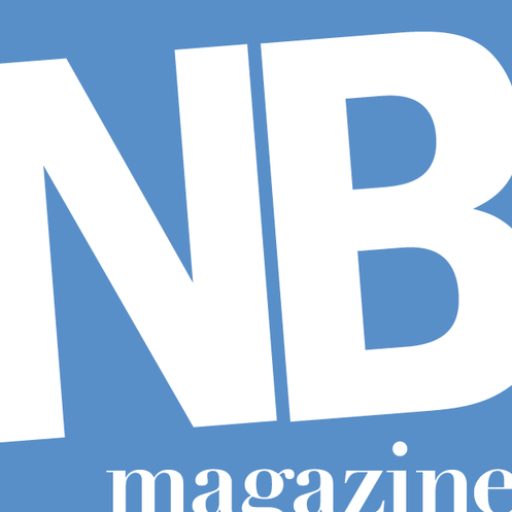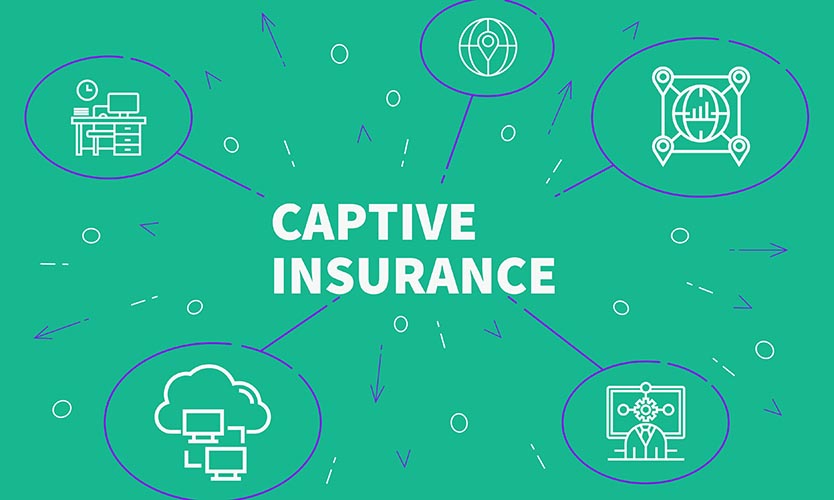Industry Focus: Business Insurance – Nevada Business Magazine
Left to Right: Shawn Cropper, JPG Insurance • Connie Brennan, Nevada Business Magazine • Matt Harris, Coreprime • Tom Burns, Cragin & Pike, Inc. • Tim Rogers, City National Bank • Mary Thompson, Capstone Brokerage • Russell Swain, GLB Insurance Group of Nevada • Dante Thompson, Insurance Group of Nevada • Susan Bauman, Nevada Independent Insurance Agents
Online Participant: Barbara Richardson, Nevada Division of Insurance
It’s no risk to say business insurance is a complicated industry. And those in the industry are going through some of the same issues as their counterparts in other fields, including staffing shortages and lingering COVID-related problems. Regardless, executives, who recently met in a hybrid online and in-person roundtable to discuss these issues, are optimistic about what’s to come for business insurance. The roundtable was sponsored by City National Bank and held in Las Vegas.
Connie Brennan, publisher and CEO of Nevada Business Magazine, served as moderator for the event. These monthly roundtables bring together different industries to discuss issues and solutions.
How has COVID Changed your Office Environment?
Tom Burns: It’s driven the conversation of remote working. We were approaching putting together a policy that addressed [remote work] before COVID hit because it tended to be an interview question [from interviewees]. While that was an oncoming thing, it wasn’t as prevalent as it is today. COVID hit and we had to stop working [on the policy] and [start] doing it.
Dante Thompson: Technology plays a huge part in it. As with Zoom and Microsoft Teams, we’re able to collaborate with one another in real-time. The technology has helped get [us] to work, keep everything on pace, make sure everything was going according to plan and the procedures were going in a good direction.
Barbara Richardson: COVID opened people’s minds to an alternative that probably most of us hadn’t thought about. How [does] remote work, hybrid work, affect our employees? How can we get the best of both worlds? There’s still a shake-out happening as people try to figure out what works best for them and for the corporate culture. This was eventually going to happen, but COVID made it happen [faster].
Mary Thompson: The other issue is what people want in a job as far as hybrid or virtual and coming into the office. In the insurance industry, people need to be around people and the newer generation just doesn’t want to participate. It’s a huge challenge.
Russell Swain: The hybrid model is really starting to take hold in our organization. We’ve got about 130 employees statewide now. And we’re talking about collaboration and how we can share people. If there’s a shortage up north, we can help there. Culture is important, and we haven’t had that for the last two years. It’s nice to be able to see people face to face.
Burns: Our charge, as leaders, is to reiterate the soft-touch things we used to do in passing in the office. [We] have to be more intentional now in different ways. Encouragement of employees has to come more intentionally and in different ways.
Shawn Cropper: We had a unique experience at our office. When COVID hit, we went completely virtual. We didn’t have any issues with that. I like the workspace, the culture. I want people in [the office], and to be able to see and communicate [with them]. When we had a discussion a few months ago [to bring people back in], our people pushed back hard. We found their productivity was as good or better working remotely. They probably do laundry and some personal things throughout the day, but the number of hours and time spent [working] was increased. Some people, you don’t have to monitor, they’re great. Some you [need] to have technology to know when they’re logged-in and working. It’s a case-by-case. It’s [not] necessarily fair to punish the higher percentage of people who are efficient, and get work done because of those that need a little bit more oversight.
Are Insurance Rates going to Continue to Climb?
Mary Thompson: : It depends on the line. On the health side, you’re looking at 15 to 30 percent rate increases year-over-year. In the auto market, I just delivered a 120 percent increase. The excess market is at least double in auto. (Excess is a form of insurance that covers businesses with high risk and otherwise have trouble finding coverage in the traditional insurance marketplace.) Pretty much, whatever you paid last year, you’re paying double it this year. A lot has to do with the industries and the exclusions being permitted. It’s become very challenging.
Burns: The property-casualty market is subject to lots of cycles and is fairly undisciplined. It goes up and down. We’ll see relief at some point on the property-casualty side. The challenge on the health insurance side is, we haven’t seen medical insurance inflation decline at all over the last 25 to 30 years. Health insurance pricing is just going to follow that. As states mandate coverage, that causes the cost of healthcare to go up and health insurance is going to trail the cost of healthcare.
Matt Harris: We always harp on this whenever we’re talking to clients [about healthcare]. It doesn’t matter if you have insurance or if you’re just going in and paying cash. The cost of the visit is going to go up and up every single year. We have virtual medicine components of our plans. The shift to virtual care is a trend in the medical space that could help keep those rates [from] increasing. It’s still going to go up but being able to divert 80 percent of the utilization into virtual visits, the carriers love that. The employees sitting at home love that. That trend is going to put downward pressure on that increase.
How can Small Businesses Combat Rising Costs?
Susan Bauman: Some employers choose to take less coverage, have higher deductibles or more falling back onto their employees. The impact is not just hitting the employer, it’s hitting everyone. It’s hitting their staff and how their families can afford or utilize insurance.
Mary Thompson: [Businesses are] mandated to provide [health insurance] if they’re over 50 [employees]. We haven’t seen too much in the small market where they’re not [covering employees] because we’ve got some great platform programs out there.
Richardson: There’s also a federal law people don’t really talk about that has some cost controls for small businesses. It allows them to pay their employees a portion of their health costs, say $500 a month. Employees can take advantage of risk and cost adjustments and potentially get their insurance at a very low cost. And employers are still offering to provide them some benefits. Hardly anybody in the state takes advantage of it.
What should Small Businesses Look for when Choosing an Agent?
Cropper: Most times small businesses just contact whoever they get referred to by someone they have a relationship with. They very rarely reach out to a handful of different agencies to get competing quotes or information. Oftentimes it leaves them with coverage that may be fine, but they don’t necessarily get the service, expertise or packages that could be available to them if they were dealing with a better professional.
Burns: You want to find a partner that is going to look after your insurance needs. Insurance is probably the most expensive, complicated thing you don’t understand that you have to pay for. [It’s important] to have somebody that understands the ins and outs of it, and you trust. It’s a critical part of having that partnership.
Cropper: The interesting thing is, the smaller and less insurance a business needs, the more they need as far as, expertise, training [and] education. It becomes difficult because a lot of agencies have a revenue threshold. They don’t want to take on clients under a certain threshold, and those clients seem to be the [neediest]. So, you spend the most amount of time with people that provide the least amount of revenue to your agency, and that can be a challenge as well.
Harris: So much is just choosing an agent or a broker that [can] add value to the process. So much now on the insurance side is commoditized so it doesn’t matter who you go to. A one-on-one broker can quote and show you all the different options. The question is, how easy are you making that process from start to finish? That’s where the agents and brokers that are going to continue growing are going to focus their energy and investment. If you’re a client, that’s what you need to be looking at. Just showing different options [for insurance] is just passing the bar. What else are you going to do to make this process easy?
Tim Rogers: From the banking standpoint, when we lend somebody money, we say, here’s your minimum required insurance. You’d be surprised when you give that to a client, a business owner, they’ve just gotten a price on the bare minimum. They don’t realize until they have a loss that they should have had more.
Mary Thompson: The average business consumer doesn’t have a clue what they need or what could happen. So, when you’re selecting an agent or broker, [ask yourself] what they bring to the table. What else are they doing besides providing a quote?
Bauman: They should look for trusted, choice agents. They should be looking for an independent agent because the agent is then representing their best interests and able to go out to any carrier or look specifically at what their needs are and go to carriers that will provide that for them.
Swain: As a past president of the Nevada Independent Agents [I’ve] served in that role to help educate, promote and provide a diversity of tools to our clients. We’ve had nine past presidents in our firm in the 82 years of history that we’ve been in Las Vegas. We’re proud of that and we like to be able to offer those diverse products to our clients.
What Types of Laws and Protections are in Place for this Industry?
Richardson: We are seeing, from legislators, a lot of focus on price control in the health insurance market. We’re also seeing the mental health parity issues becoming a focus of the legislators, trying to figure out how to make that work. Telehealth, which is something we’ve already discussed, has been in the law for years. It didn’t support the Medicaid and Medicare populations, and because of that, the cost seemed to be preventive. When the federal law changed and they were included, companies made significant inroads in telehealth.
Bauman: We have a legislative arm [in our association], and we have some workings and conversations on this very subject. We’re regulated by the [Nevada Division of Insurance who is] enforcing the laws the legislature has put in place. When we see that there are laws that need to be changed, we try to find a legislator that will support our cause. Then we work up the wording and legislation so that we could put it together as a bill and get it passed.
Richardson: There are consumers who take advantage of insurance companies. We saw an uptick in people providing fake death certificates because of COVID and trying to make claims on people who hadn’t passed away. Those are things we work with the attorney general on to go after bad actors. We tend not to advertise we’re doing it. We don’t want to encourage people to take advantage of the market. We work with other states, when there’s bad actors across state lines and with the FBI when they cross national and international [borders]. Those things are usually done quietly. The national insurance crime bureau and the Coalition Against Insurance Fraud predicts [deceitful claims] are anywhere between 11 to 15 percent.
Mary Thompson: There’s another part of insurance fraud or misuse. That’s when [someone has] an accident, a little fender bender, and they get an attorney and go to physical therapy for six months. They really had nothing wrong with them. We’re seeing a lot of that, especially [on] the commercial side. If you get hit by a [commercial] truck, there’s always an attorney [involved].
Swain: We had a client that hit a newer vehicle, and there was no damage to the bumper. [But] the three occupants inside ended up with $75,000, $60,000 and $55,000 in medical bills. That loss ended up costing the client over half a million dollars. It made a significant impact [on their insurance].
Bauman: It’s not just the client who is affected. Everyone pays for the high cost of claims one way or another. Carriers have to be able to refill the funnel. and it just keeps costing everyone more, all of our consumers.
What is on the Horizon for Business Insurance?
Harris: The future is bright. Technology is really going to move into our space significantly. The opportunity for technology is, primarily, coming from the broker side of things. You’re going to have some direct-to-consumer plays coming from the carrier, but it’s going to be mainly in small commercial individuals. The opportunity for brokers to harness technology to grow is significant.
Bauman: There’s a lot of noise in the market right now with technology. There are so many different, tech-savvy companies coming in and trying to give platforms for agents and carriers to work from. There’s going to be some that fall out and some will be successful. There are management systems right now that agencies [use] for quoting and processing data for their clients. They all partner with people who are offering different services, whether it be for quoting, processing and [other] technology.
I’m hearing a lot from our agents right now that they don’t know which [platforms] to utilize. And some things are being promised that aren’t necessarily coming through for them. The other side of it is, the carriers are going through their transitions and partnering with tech companies and sometimes it creates more work for the agent. And, going back to COVID and the whole situation with working virtually, I’m hearing a lot from our agents that there is a lag time in follow up from underwriters and there’s been a lot more. [The agents] are not quite sure if it’s because they’re using virtual assistants or if people are distracted because they are working from home.
Swain: We really see a lot of that in the claim service aspect. You can’t get ahold of a claims INDUSTRY FOCUS adjuster, and they’re overwhelmed with work, yet they have the same staff. We’ve really been seeing a great fallout in terms of service level and being able to get claims handled. Hopefully, we can move toward improving that. I think getting back into a hybrid situation where people are more accountable [would help].
Bauman: There’s a difference between the benefits side and the PNC (Property and Casualty Insurance) side because the benefits carriers have been more tech-savvy for a number of years. On the PNC side the technology has lagged. Now there’s this huge push for people to be digitized, focus on SEO, use internet leads, process their business and run quotes and claims through technology. There is going to be a little more pain before it gets better.






